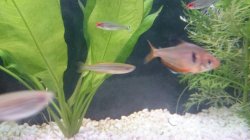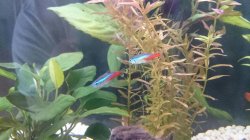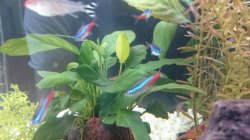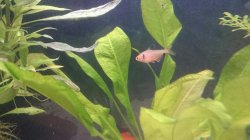Hi,
I have just noticed that on my neon and serpae tetras that some of their fins (mainly their tails) have white patches developing on them rather than being transparent. Before anyone asks, they don't look like grains of salt so I don't think it's ich (but I'm not an expert).
Some of my neons have had their tails nipped and this is where the white patches are. Is it a sign of infection? Or that it is healing?
Here are some pictures. Very hard to get the neons and serpae to stay still long enough to take a good photo!
I'm hoping it's not some sort of fungus/infection like fin rot (which i've heard about but don't know much about).
I have just noticed that on my neon and serpae tetras that some of their fins (mainly their tails) have white patches developing on them rather than being transparent. Before anyone asks, they don't look like grains of salt so I don't think it's ich (but I'm not an expert).
Some of my neons have had their tails nipped and this is where the white patches are. Is it a sign of infection? Or that it is healing?
Here are some pictures. Very hard to get the neons and serpae to stay still long enough to take a good photo!
I'm hoping it's not some sort of fungus/infection like fin rot (which i've heard about but don't know much about).






 I assumed they would only nip at other species?
I assumed they would only nip at other species?